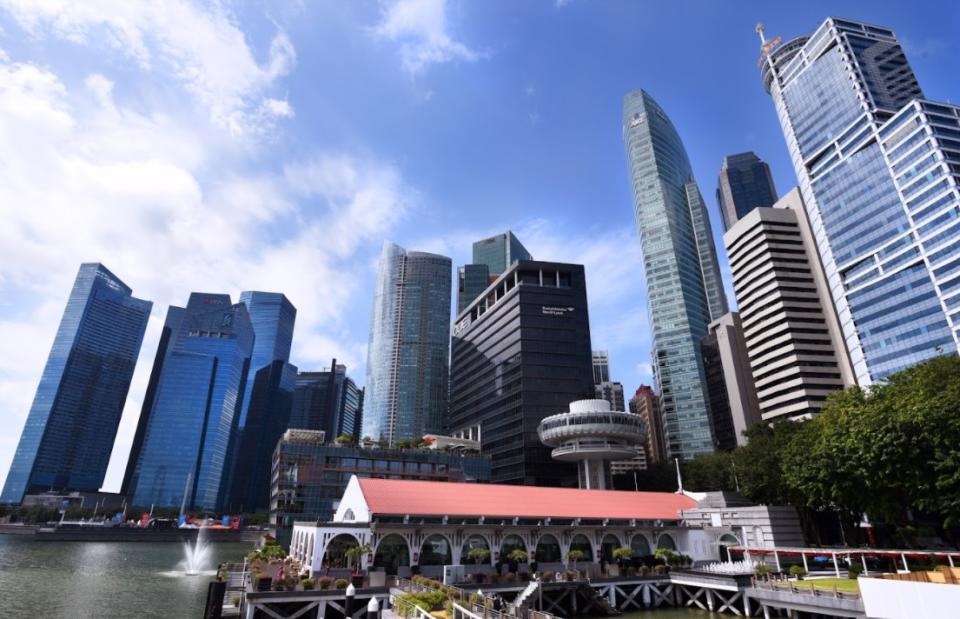Operationally, S-REITs have to navigate higher cost of debt despite rate cycle peak

Operationally, S-REITs still have to contend with higher cost of debt, lower ICRs despite peak in interest rate cycle
The interest rate hike cycle appears to be done and dusted with the Federal Funds Rate possibly topping out at 5.25% to 5.5%. The first Federal Open Market Committee (FOMC) meeting is on Jan 30-31. Further movement on the FFR is unlikely although markets will pay close attention to the FOMC minutes to divine when rates could start to fall.
Risk-free rates (the yield on 10-year US treasuries) have been on something of a roller coaster ride, falling to as low as 3.8% in the closing days of 2023 but rebounding to above 4% in the first week of 2024.
While REITs’ unit prices often take their cue from risk-free rates and their yield spread, operationally, S-REITs are likely to be stuck with the higher-for-longer scenario.
Between March 2022 and December 29, 2023, the 2-year SGD Sora increased by around 154bps; 3-year and 5-year Sora are up by 118bps and 98 bps respectively, in the same period. OCBC Credit Research says the 3- and 5-year Sora are good proxies for the cost of debt for S-REITs. Against this backdrop, S-REITs may continue to face higher refinancing cost when their debt matures and they enter into new fixed rate hedges as the S-REITs are likely to be refinancing debt that was transacted at lower levels back in 2021 and 2022.
According to the report, even if an S-REIT may be enjoying rates that have been locked in when benchmark interest rates were favourable, S-REITs still have to refinance at higher costs eventually when debt comes due. “Overall, we expect that many S-REITs will continue to refinance debt at a higher cost going into 1H2024 versus cost of debt reported in the latest quarterly disclosures,” OCBC Credit Research warns.
Additionally, the interest rate cycle may continue to have a negative impact on valuations, OCBC Credit Research suggests. What is known in the market is that S-REITs with overseas assets are likely to suffer larger declines in valuations than S-REITs with predominantly local properties. CapitaLand Investment and Frasers Property Tq5 have already articulated that valuations declines have affected their net profit figures.
As an example, CapitaLand Integrated Commercial Trust C38u’s German and Australian properties are likely to show valuation declines, but they comprise around 7% of CICT’s total valuation, hence the impact may be manageable despite its elevated aggregate leverage.
Elsewhere, Manulife US REIT has announced an 8.1% decline in its valuation as at end-December 2023.
“The specific magnitude of change is highly dependent on the geographical market, property specification and valuation norms. The underlying operating performance of the Singapore property market has been exceptionally resilient relative to cities globally although we are more cautious over S-REITs whose property portfolio are tilted towards geographical markets and property sub-segments where the outlook has weakened,” OCBC Credit Research cautions.
Higher policy rates indirectly raise discount rates which are used in the DCF method to value properties. OCBC Credit Research reckons that valuers will consider that S-REITs primarily hold their property assets for generating income rather than for property trading. “As such, we think valuers have held off from fully marking down the value of properties owned by S-REITs to levels which we think buyers are demanding in the current environment,” OCBC Credit Research says. It adds: “We expect some asset corrosion when S-REITs disclose their property valuation as at end-2023, though not the full impact.”
Among sub-sectors, OCBC Credit Research warns that supply of industrial property could rise, based on a Cushman & Wakefield (C&W) report. The industrial sector is no longer in an undersupply situation such as that experienced during the pandemic. As at 4Q2023, new supply is estimated at 0.3 million sq m. while new supply in 2024 is likely to be 1.9 million sq m. In 3Q2023, industrial vacancies were at 11.1%.
An additional negative impact of higher interest rates is on interest coverage ratios (ICR). Minimum ICRs were introduced on Jan 1, 2022 by the Monetary Authority of Singapore for S-REITs which had aggregate leverage levels above 45%. S-REITs already have ICRs as part of their financial covenants with banks, and these tend to be lower than the ICR of 2.5x stipulated by the MAS.
Based on OCBC Credit Research data, as at Sept 30, 2023, ICR/Adjusted ICR has fallen to an overall average of 3.2x versus an overall average of 4.3x for the last 12 months (LTM) to Sept 30, 2022. “Three S-REITs we track did not report Adjusted ICRs for LTM to Sept 30 2022 while two did not for LTM to Sept 30, 2023, even though these have outstanding perpetuals,” the report points out.
See Also:
Click here to stay updated with the Latest Business & Investment News in Singapore
Maybank keeps ‘neutral’ on S-REITs, ‘agnostic’ on the sector
Local market's recovery intact but are Chinese equities undervalued?
Get in-depth insights from our expert contributors, and dive into financial and economic trends

 Yahoo Finance
Yahoo Finance 